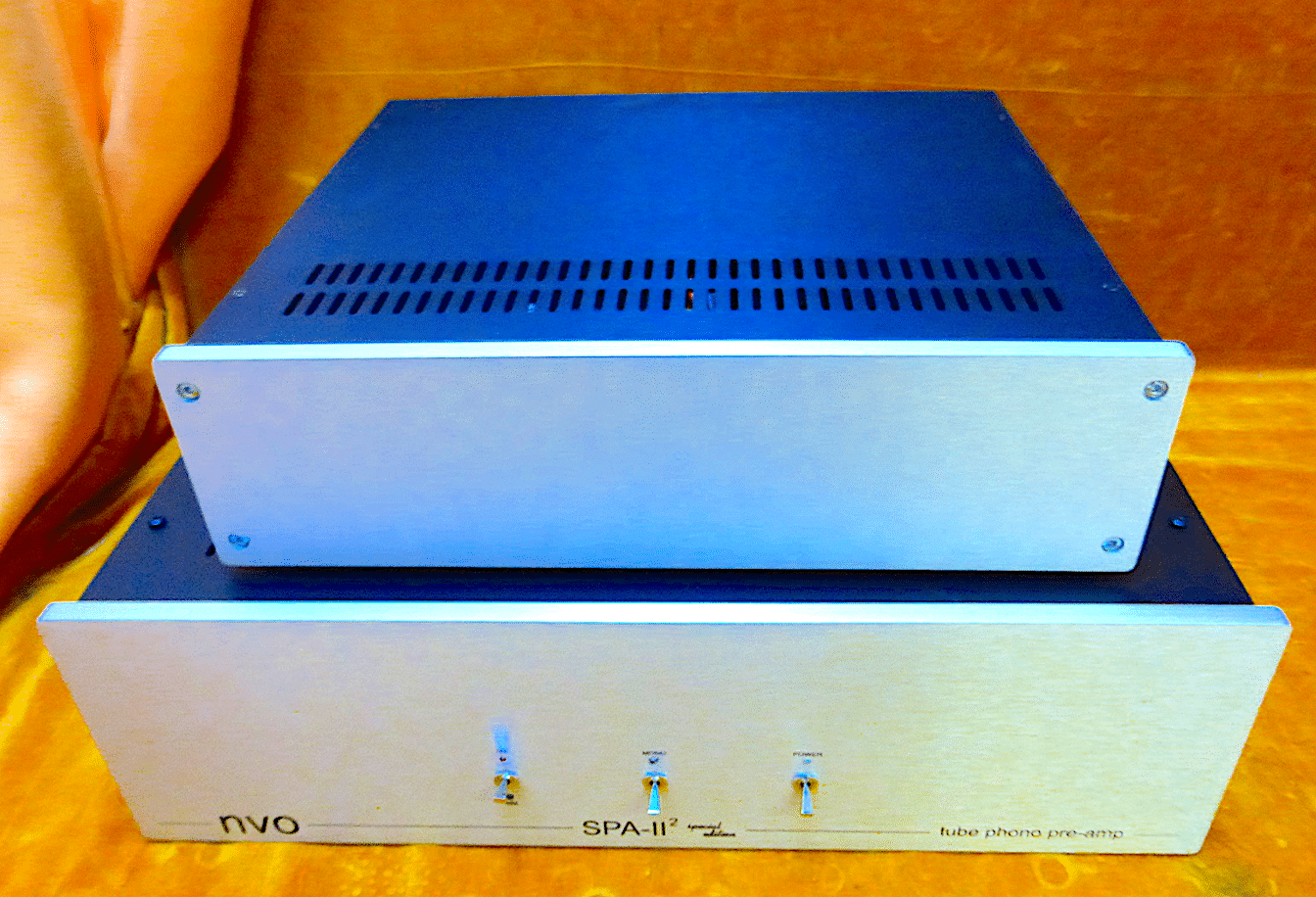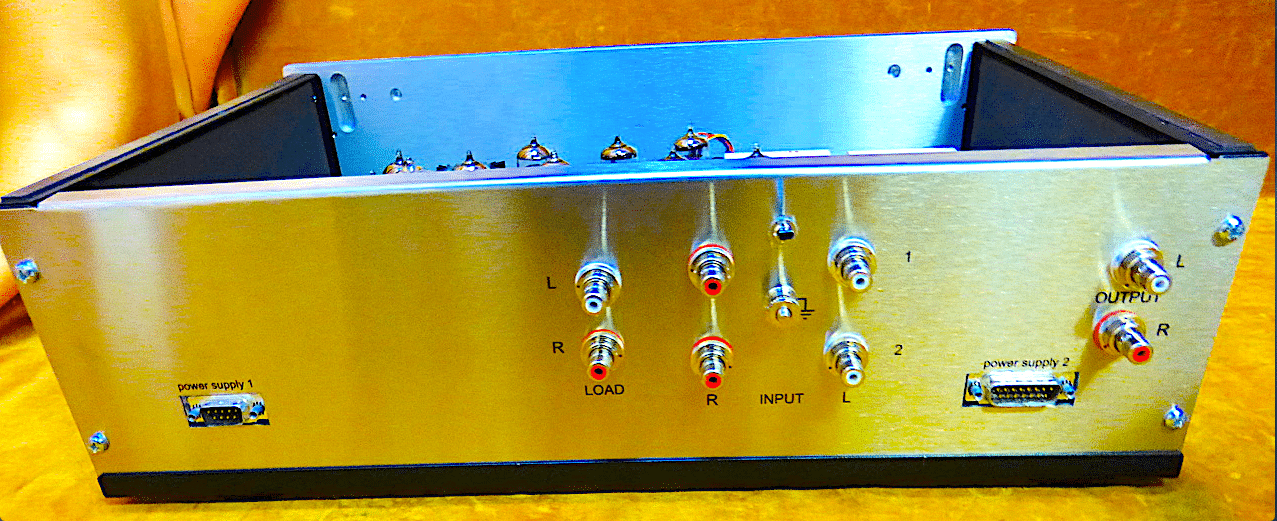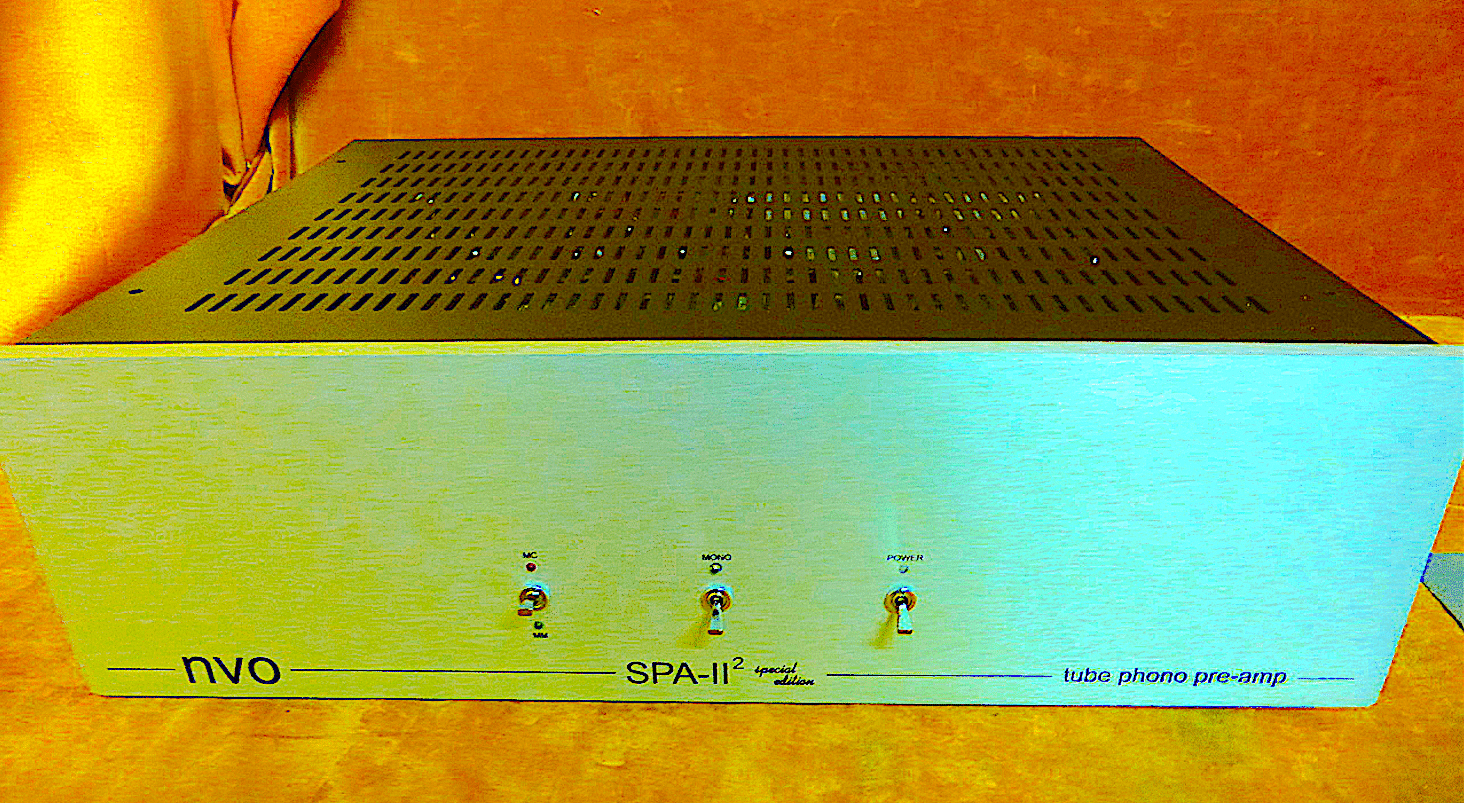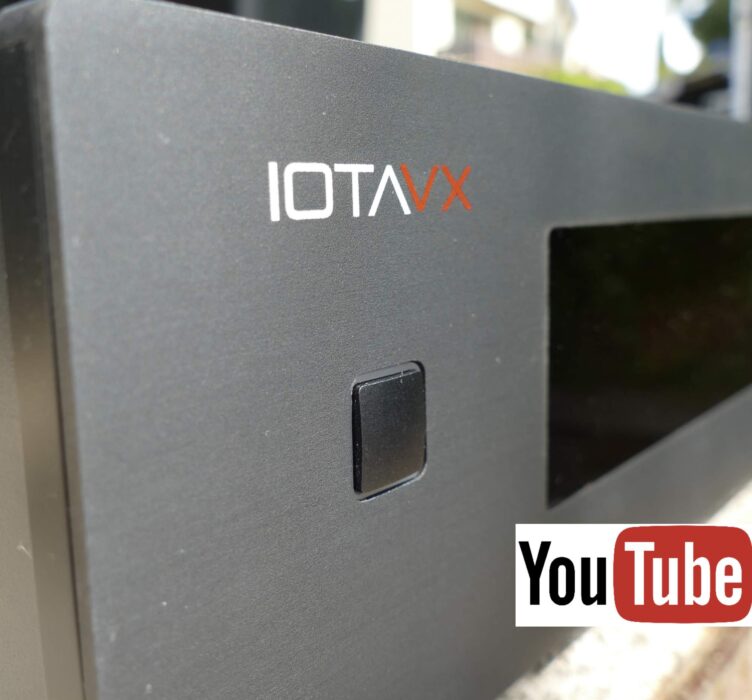The Article
NVO SPA II/2 Special Edition: A Big and Bold Valve Phono Amp
16th September 2016

Created by Leak amplifier fan, Andreas Hadjiminas, via Nicosia, Cyprus, the NVO (New Valve Order) SPA-11/2 Special Edition is an imposing, hulking great phono amp, packing in 22 valves. Paul Rigby moves the furniture before reviewing it
The construction of the phono amp is brutalist in its architecture with firm, clunky, big and bold switches on the front fascia offering choices between moving-magnet (MM) or moving-coil (MC) cartridges, a mono and power switch.
On the rear are RCA inputs and outputs, a grounding post and two umbilical connectors that connect the main chassis to the outboard power supply via D-connectors. The main unit spans 450 x 310 x 125mm and weighs in at 7kg.
Rather than the standard ECC88/6922 input stage valve it uses, per channel, two valves of the Russian model 6C45Π instead, for its lower noise qualities. The RIAA curve is implemented with two 12AX7 stages and a cascaded 12AU7 white cathode follower output.
Housed in a separate chassis, the dual mono power supply, weighing 7kg and spanning 340 x 295 x 85mm, uses two valve plate regulators per channel plus filtering and star grounding.
According to the company, Every NVO SPA II/2 Special Edition is tested and tuned according to the prototype while all valves are checked for microphony, and the wiring (Japanese PCOCC-A wire, actually) has been kept to a minimum.
IN USE
Be patient with this phono amp as it doesn’t spring into action, it takes a few moments to light up. I would also, as ever with valves, give the unit a full hour to reach sonic perfection before you listen too.
There are problems with the design and build of this phono amplifier. Firstly, it’s big. That is unavoidable because of the design targets but the size remains, nevertheless. This might or might not be an problem for you but two whopping great boxes within any hifi chain will create space concerns. Make sure you are happy with the size issue before you buy.
Secondly, the SPA II/2 SE runs hot. Hot enough to burn your hand if you left it sitting in the wrong place at the top of the chassis. That is, around the centre of the top plate.
Thirdly, the actual D-type termination plugs at either end of the umbilical power connectors are cheap, plastic affairs that I’m more used to seeing hanging off a PC computer. For the price of the phono amp, I expected more.
Lastly, the three controls on the front of the control section each feature a small, round but very bright lamp with no option to turn them off (If you could turn them off then you would remove extra noise, surely, which would be a win-win all ‘round?). You really need to cover these things with tape, otherwise you will suffer temporary light blindness. Any poor soul who adds the bright blue mono lamp to the bright green power lamp and the bright red MC/MM lamp risks a confused approach from an Airbus looking to land in their listening room.
SOUND TESTS
To begin, I turned to Dakota Staton and a piece of vocal jazz, performed in front of a jazz orchestra with the melancholic ballad ‘Round Midnight. This is a complex track because of the varied orchestral elements, many of them quite subtle and interconnecting.
When I review hi-fi, I try to pick out elements of a recording using my reference around the soundstage and remember what they sound like, how they’re presented and so on, to compare with the new review unit.
Here, though, when the SPA II/2 SE was in full flow, while I was trying to listen to the accompanying piano and clarinet, I kept being pulled back to the vocal. The reason was that the SPA II/2 SE offered a fascinating insight into Staton’s delivery. When any singer does their thing, there are, if you listen closely, tiny imperfections all over the place which give that singer a style of their own. It humanises the performance. The SPA II was able to investigate a host of these details. Staton’s voice, during the vibrato section of a line broke up and fractured a touch. Something that I was not used to hearing. It gave her voice a new fragility that meant that the song was more heartfelt. That is, the song sounded sincere and personal.
Back to those accompanying instruments, I was happy to hear a confidence and a composure from the orchestra that exhibited itself in a convincing tonal realism. For example, during the brief clarinet excerpt at the beginning of the song, the clarinet appeared to be filled with a new supply of air. That ‘blow through’ reminded me that a man was playing this thing, giving the piece an organic feel. Similarly, the piano (which seemed to be present over more of the song than usual, such was the SPA II/2 SE’s clarity) and backing strings offered a realism that attracted an adoring ear while, subtly but possibly more interesting still, was the background percussion. Here, the fine treble performance exhibited delicate and tiny reverb laden cymbal taps.
Despite the insight, there was a warming aspect to the sound which, no doubt, is aided by the forest of valves from within but there is no sense of masking with this warmth. Indeed, the SPA II/2 SE appeared to have a nicely balanced ‘voice’ which exuded relaxation and ease, giving the performance a fluid feel.
Moving to more dynamic fare and Camel’s prog rock LP, Moondmadness with the track, Song Within A Song, two aspects of this song were notable via the SPA II/2 SE. Firstly, there were parts of this long track where the drummer tapped the cymbal repeatedly. The result was delicate and a treble-filled cloud of reverb. More than that, though, such was the tonal accuracy, I was easily able to hear a change in effort on the drummer’s behalf. For example, when he hit the cymbal relatively harder, you could hear a metallic response from a larger piece of metal (which, of course, a cymbal is). So, with a harder tap, there was a sense of ‘bigness’ and deeper resonance.
Secondly, later, in the song, there was a very catchy synth solo that is a signature part of the track. What I got from this was the personality of the synth being played. That is, you could almost hear it being played at its boundaries. There seemed to be parts of the solo where you knew that this was the synth’s performance limit. It couldn’t physically give any more. This was an original analogue synth, to remind you, hence its personality was more forthcoming. Yet, it was gratifying that the SPA II/2 SE could pick this up.
Finally, playing the electro-pop of Sleepwalk from the Ultravox album, Vienna. I was, frankly, shocked. In a good way, that is. If I could compare this track to, say, a piece of clothing, then it was an Italian suit. Stylish, flowing yet tailored without a hair out of place. This normally dry sounding track with a dominant percussive beat offered a new balance and integration that was far more human and warm blooded the usual. It sounded trim, though. Fast and tonally slick. As if it had just emerged from the gym. This compactness gave the track added impetus and movement.
CONCLUSION
The more I listened to the SPA II/2 SE, the more I liked it. The reason for that was generally because, the more I listened to it, the more musical highlights I discovered, such was the overall phono amp’s perception of tiny yet significant details. The SPA II/2 SE s ability to penetrate deep into the mix to discover subtle detail without having to resort to old tricks, such as increasing the upper midrange brightness, was welcome and delightful. While the new-found realism from familiar instruments now has me running through my record collection to see what else I can discover.
NVO SPA II/2 SPECIAL EDITION
Price: £6,500
Tel: 01508 518542 or 01304 239419
GOOD: tonal balance, midrange insight, balanced presentation, solid build, toggle switches!
BAD: size, runs hot, cheap power connectors, bright interface lights
RATING: 8
SYSTEM USED
Origin Live Sovereign turntable
Origin Live Enterprise 12” arm
Transfiguration Proteus cartridge
Icon Audio PS3 phonostage
Aesthetix Calypso pre-amp
Vertex AQ & Atlas cabling








Paul,
That was a very detailed and succinct review. Nicely done. Have you listened to the nvo spa one se? If so, how does it compare? I’m also wondering if you’ve heard the Modwright ph 9.0 or the 9.0x? Apparently, both shoot above their price points…if that can actually happen.
One final question for you. It seems that you’re very impressed by the sound production of this phono stage. If it weren’t for the surrounding box might you have given this unit a 9/10 or maybe a 9.5?
Thanks again.
Thanks Jon and no, I’m afraid I haven’t heard that one. The notes under the BAD section lists my issues with this one. Very nice though, in sound terms.
Paul,
Thank you for responding back to me so quickly. I am still curious about how you would taste this phono stage based solely on sound reproduction.
Supposed to say, “how you would rate this phono stage based solely on sound reproduction.”
All of my thoughts are in the Sound Quality section of this review, Jon. Not sure what else I could add to be honest.
Yes, I have noted those comments. I guess I was just wondering, based on your 8 out of 10 rating, if that rating is an eight because of the “bad” items. If the phono stage didn’t get exceedingly hot and didn’t have the construction concerns you noted (plastic power connections and bright indicator lights), would it have made a difference in your overall numerical rating? Basically, I’m trying to determine if the Sonic qualities of this preamp put it into the upper echelon of phono stages. I appreciate your patience and continued discussion.
The review itself is based on the ‘package’ of the facilities and its attendant sound and I can’t really divorce one from the other, Jon. If the company tweaked the ‘bad’ bits I noted that might impact the sound in some way for good or ill and/or the price. Hence, the best I can do is direct you to the Sound Quality section for sound notes. But the rating stands as a ‘package’.